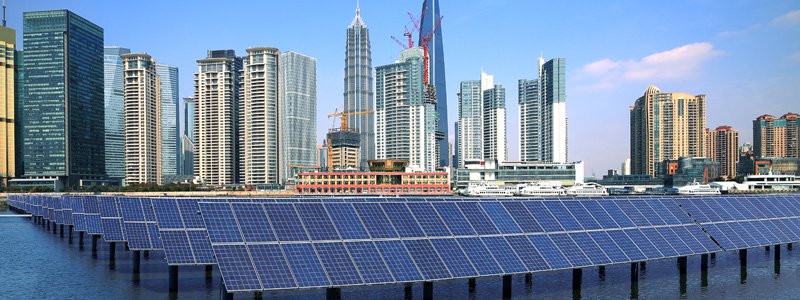
China has a couple of advantages over other nations in upcoming climate talks: it has no opposition parties and potentially lots of eager investors.
Climate pledges like those the nations of the world will be making in Paris at the Conference of Parties (COP) in December can be rolled back by a subsequent change in government, as Canadians learned after Kyoto and Australians after Copenhagen.
In Australia, Tony Abbott's party reneged on promises made by Julia Gillard's party at Copenhagen, for example. But with no opposition party, China’s climate policy doesn’t get reversed. Its Five Year Plans simply get implemented.
That could mean good news for solar if China intends to show a strong hand on climate at the Paris talks, since it comes at a time when more financial instruments are becoming available to fund PV development.
China’s government has listed the solar industry as a national priority, according to Li Wenxin, research and development lead engineer for the PV Business Division of the China General Certification Center, which certifies Chinese PV modules.
“Our environmental problem is prominent and needs to be solved,” she explained. “Developing renewable energy has been chosen as an important way for solving environment problems.”
The need for investment in clean energy, and solar in particular, is more compelling in a nation where the effects of coal pollution are seen and breathed every day.
Like London's pea-soup smog by the end of the 19th century, the dire environmental effects of a rapidly growing coal-based economy are viscerally apparent.
This coal-based environmental disaster has coincided with the rise in a large and an exuberant new middle class with the understanding and the means to solve the problem through new forms of investment now available in China for the first time.
There is a pent-up demand for investment options by China's rapidly expanding middle class, which at 340 million already outnumbers the entire population of the US. Urban household income is expected to double by 2022.
When the first-ever stock market opened to new investors there was a rush to sink money into stocks.
But after the new Chinese stock market shocked investors with a 20% drop in its first year, it is likely this huge new class of eager investors will see crowdfunding, green bonds and yieldcos as offering safer alternatives to traditional stocks.
Green bonds, yieldcos and crowdfunding all offer steady, predictable returns over a set period, and are open to a new class of investor, so these vehicles could catapult the switch from fossil fuels by leveraging China’s pent-up investor enthusiasm.
Crowdfunding is already well suited to China since it works best for projects done locally, according to Mark Henderson, director of renewable energy debt at London-based investment firm Temporis Capital, which provides capital to green projects.
"Whilst crowdfunding can be internationally sourced, in practice I believe it is more of a local funding source, given the need to be comfortable with local legal systems and currencies and so forth," said Henderson.
"In the developing world the question will then be the size of the potential funding pool."
Meanwhile, Chinese solar manufacturers Canadian Solar, Trina and GCL are all moving towards spinning off solar farms into yieldcos. And China offered its first green bond in July.
China's leading turbine maker and wind farm operator, Xinjiang Goldwind, issued $300 million in three-year bonds. It was oversubscribed five times, generating an astonishing $1.5 billion in working capital.
A $94 million Yuan green bond offering from Agricultural Bank of China, Barclays, HSBC and JP Morgan was eight times oversubscribed, with Asian investors accounting for 94% of demand, generating $767 million.
China’s combination of secure policy, new middle class, general disgust with pollution and widened access to new investment options comes on top of an already significant momentum towards renewable energy generation.
In 2014, China installed 35 GW of renewable energy and was the world’s biggest single investor in renewables. At USD$83.3 billion, its level of investment was more than twice that of the US’s $38 billion.
Under China’s 12th Five-Year Plan, through 2015, the country aimed to source 11% of all primary energy (not just electricity) from renewable sources by 2015, 15% by 2020 and 20% by 2030.
By 2013 China had surpassed Europe in clean energy investment, and has been the world leader since. Already the world’s leading solar manufacturer, China switched to solar deployment in 2014, installing 11 GW, and doubling that in 2015 with 19 GW.
It is on track to meet its goal of 100 GW of solar by 2020. Since no other country has moved so fast in such a short time, China’s climate pledge at COP21 could set an example worth following.
